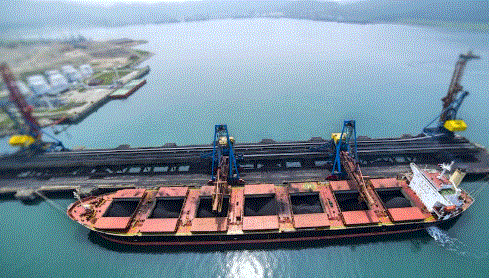Capesize rates hovered above the $30,000 level, despite softening freight rates recorded in both Pacific and Atlantic markets.
This weakness was reflected in the paper market, which the Capesize 5 time charter average saw a slight gain of $62 day-on-day to $30, 939 on Wednesday, from a weak afternoon session.
The Baltic Dry Index (BDI) however, continued to achieve new height and reached 1,803 points, on better shipping demand.
Losing steam after recent rally
The Pacific market still had decent demand with three major miners, Rio Tinto, BHP and FMG active in seeking vessels to move iron ore out of Australia.
At least seven ships were fixed by the miner for the west Australia to China route at the indicative freight range of $10-$10.20/wmt.
On the contrary, the Atlantic market saw thin trading with bids and offers moving downward on the key Brazil to China route.
Mining major, Vale was heard to be seeking vessels, but nothing was confirmed, while the indicative freight levels heard on the Brazil to China route were in the $19s/wmt to $20.5/wmt range.
Strong bunker prices fail to support freight rates
VLSFO prices surged by $8/mt to $329/mt at the port of Singapore, following the upturn in crude price movements.
The Brent crude prices moved higher toward $42 per barrel, while the WTI maintained at the $40 per barrel mark, supported by lower oil output from OPEC and US largest inventory draw.
According to Bloomberg, OPEC members had cut their oil output by 1.93 million barrels per day month-on-month to 22.69 million barrels per day in June, the lowest level since May 1991.
The lower supply then supported upward movement of oil prices after Energy Information Administration (EIA) reported largest inventory draw for the year at a decrease of 7.2 million barrels for the week ended in Jun 26.
